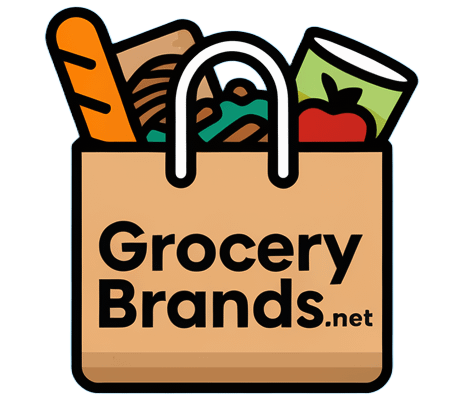GroceryBrands.net is a participant in the Amazon Services LLC Associates Program. When you click our Amazon affiliate links and make a purchase, we earn a commission at no extra cost to you.
The best gluten-free cereals are made with naturally gluten-free grains like rice, quinoa, and corn, and contain no cross-contamination from wheat, barley, or rye. These options are essential for people with celiac disease or gluten sensitivity but also appeal to anyone seeking a cleaner, more digestible breakfast.

This article explores the top gluten-free cereal choices, their benefits, and what to look for when choosing the right one for your needs.
What Makes a Cereal Truly Gluten-Free?
A cereal must contain no gluten-containing ingredients and must be manufactured in a gluten-free facility to avoid cross-contamination.
Key Gluten-Free Grains to Look For
Many cereals use these naturally gluten-free grains as their base:
- Brown rice – High in fiber, gentle on digestion
- Quinoa – A complete protein and rich in minerals
- Corn – Common in puffed or flake cereals
- Millet – A nutrient-dense ancient grain
- Buckwheat – Despite the name, it’s gluten-free and fiber-rich
Certified vs. Labeled Gluten-Free
Not all “gluten-free” claims are equal:
- Certified gluten-free cereals meet strict standards (usually <20 ppm gluten)
- Labeled gluten-free products may not be certified but still meet FDA guidelines
Benefits of Choosing Gluten-Free Cereal
Even if you don’t have celiac disease, gluten-free cereals can offer advantages for certain individuals.
Digestive Comfort
Many people find relief from bloating, fatigue, and brain fog by avoiding gluten.
- Helps reduce gut inflammation in sensitive individuals
- May ease symptoms of IBS or autoimmune flare-ups
Cleaner, Less Processed Ingredients
Many gluten-free cereals use whole grains and skip artificial flavors and preservatives:
- Better for overall nutrient absorption
- Often more transparent labeling
Best Gluten-Free Cereal Brands in 2025
There’s no shortage of great-tasting gluten-free options, from mainstream grocery shelves to health food stores.
Popular and Certified Gluten-Free Brands
These brands offer safe, delicious choices:
- Nature’s Path Organic Mesa Sunrise: A multigrain cereal with flax, corn, and quinoa
- Chex Cereal (Corn and Rice): Widely available, certified gluten-free
- Barbara’s Multigrain Puffins: Crunchy, lower sugar, gluten-free verified
- Love Grown Power O’s: Made with beans and lentils, high protein
Hot Cereal Gluten-Free Choices
If you prefer a warm breakfast:
- Bob’s Red Mill Gluten-Free Oatmeal: Available in rolled or quick-cook forms
- Cream of Buckwheat: An underrated option for hot cereal lovers
Tips for Picking the Right Gluten-Free Cereal
Not all gluten-free cereals are automatically healthy. Here’s what to keep in mind.
Read the Full Ingredient List
Check for hidden sources of gluten or excess sugar:
- Avoid malt flavoring (derived from barley)
- Choose cereals with less than 6g of added sugar per serving
Consider Nutritional Balance
Choose cereals that provide both fiber and protein:
- Look for 3g or more of fiber and at least 3g protein per serving
- Add fruit, seeds, or Greek yogurt to increase nutritional value
Creative Ways to Enjoy Gluten-Free Cereal
Cereal doesn’t have to be boring or repetitive. Mix it up with these ideas.
Ways to Boost Taste and Nutrition
Add extra flavor and nutrients with these toppings:
- Fresh or dried fruits (e.g., bananas, blueberries, raisins)
- Chia seeds, almond slivers, or shredded coconut
Beyond the Bowl
Use gluten-free cereal in other creative ways:
- Trail mix base – Combine with nuts and dried fruit
- Crust coating – Use crushed cereal for baking or frying
- Parfaits – Layer with yogurt and fruit for texture
FAQs About Gluten-Free Cereal Choices
Here are some questions and answers about gluten-free cereal to help guide your shopping and breakfast decisions.
What cereals are naturally gluten-free?
Cereals made from rice, corn, quinoa, millet, and buckwheat are naturally gluten-free, as long as there is no cross-contamination during processing.
Is oatmeal gluten-free?
Oats are naturally gluten-free, but many are processed in facilities that also handle wheat. Choose certified gluten-free oats to be safe.
Are Chex cereals gluten-free?
Yes, Corn Chex and Rice Chex are certified gluten-free, but avoid Wheat Chex as it contains gluten.
How can I be sure a cereal is gluten-free?
Look for a “certified gluten-free” label on the box, and check for allergen warnings about wheat or cross-contamination.
Can kids eat gluten-free cereal every day?
Yes. Gluten-free cereals are safe and healthy for children when they include whole grains, fiber, and low sugar content. Always check the nutrition label.
